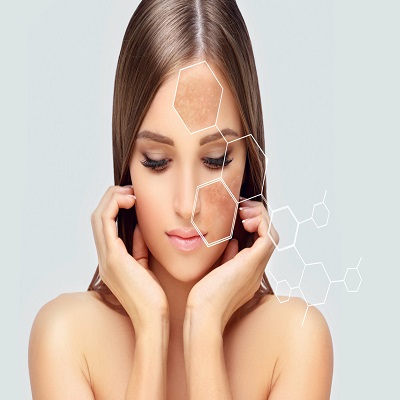Melasma is a persistent pigmentation disorder that causes dark, blotchy patches on the face, particularly on the cheeks, forehead, nose, and upper lip. This condition is especially common in women and is often triggered by hormonal changes, sun exposure, or genetic predisposition. One of the most effective methods for improving the appearance of melasma is chemical peels. Patients seeking Melasma Treatment in Islamabad frequently consider chemical peels due to their proven ability to exfoliate the skin and reduce excess melanin, promoting a clearer and more even complexion.
Understanding how often chemical peels should be done is crucial for ensuring both safety and efficacy. The frequency depends on several factors, including the severity of melasma, skin type, type of chemical peel, and overall skin sensitivity.
What Are Chemical Peels?
Chemical peels involve the application of a chemical solution that causes the top layers of the skin to exfoliate and eventually peel off. This process reveals fresher, less pigmented skin underneath. The treatment stimulates cell turnover and reduces pigmentation irregularities, making it a common choice for melasma management.
Chemical peels are classified based on their depth of penetration:
- Superficial peels (e.g., glycolic acid, lactic acid): Target only the outermost layer of the skin (epidermis) and are suitable for mild cases of melasma.
- Medium-depth peels (e.g., trichloroacetic acid – TCA): Reach the upper dermis and are more effective for moderate pigmentation.
- Deep peels (e.g., phenol peels): Reach the deeper layers of the dermis but are rarely used for melasma due to high risk of post-inflammatory hyperpigmentation, especially in individuals with darker skin tones.
How Often Should Chemical Peels Be Done?
The ideal frequency of chemical peels for melasma varies depending on the type of peel used and individual skin characteristics. A personalized plan devised by a dermatologist ensures safe and effective treatment.
1. Superficial Peels
These peels are the most commonly used for melasma due to their safety profile and minimal downtime.
- Frequency: Every 2 to 4 weeks
- Number of Sessions: Typically 4 to 6 sessions
- Benefits: Gradual fading of pigmentation, improved skin tone, minimal side effects
Patients often see visible improvement after 3–4 sessions, and optimal results are usually achieved with continued sessions spaced over two to three months. Maintenance peels may be done every 6–8 weeks thereafter to sustain results.
2. Medium-Depth Peels
These are used for more stubborn or extensive melasma and require more downtime and post-treatment care.
- Frequency: Every 6 to 8 weeks
- Number of Sessions: Generally 2 to 4 sessions, depending on skin response
- Benefits: Deeper exfoliation and effective reduction in pigmentation that doesn’t respond to superficial peels
Because these peels are more intensive, the skin needs ample time to heal between treatments.
Factors Affecting Peel Frequency
Several variables influence how often a person can safely undergo chemical peels for melasma:
Skin Type
Darker skin tones (Fitzpatrick Types IV–VI) are more susceptible to post-inflammatory hyperpigmentation. For these individuals, lower-strength peels at longer intervals may be safer.
Skin Sensitivity
Highly sensitive or reactive skin may require extended intervals between treatments to avoid irritation, inflammation, or pigment rebound.
Severity of Melasma
Mild cases can be addressed with superficial peels alone, while more severe or resistant forms might require a combination of medium peels and adjunctive therapies, spaced appropriately.
Type of Peel Used
Each type of chemical peel has a different recovery time. Stronger peels with deeper penetration need longer intervals between sessions.
Response to Treatment
If the skin responds well with minimal irritation and noticeable improvement, the same schedule can be continued. Otherwise, adjustments may be necessary.
Combining Chemical Peels with Other Treatments
Chemical peels are most effective when used as part of a comprehensive melasma treatment plan. Dermatologists often recommend combining them with:
- Topical agents such as hydroquinone, tretinoin, kojic acid, or azelaic acid
- Sun protection including broad-spectrum sunscreens with SPF 50 or higher
- Oral medications like tranexamic acid for stubborn or recurrent cases
- Laser therapy or microneedling for patients who require more aggressive interventions
Combining treatments maximizes pigment reduction and prevents recurrence.
Post-Peel Care: Critical for Safe Results
Proper post-peel care is essential to reduce the risk of complications and improve treatment outcomes:
- Sun protection: UV exposure can worsen melasma and counteract the benefits of peels. Daily application of a broad-spectrum sunscreen is essential.
- Gentle skincare: Avoid harsh products like exfoliants, retinoids, and alcohol-based toners for several days post-treatment.
- Moisturization: Use non-comedogenic moisturizers to soothe the skin and support the healing process.
- Avoid picking or peeling skin: Let the skin shed naturally to prevent scarring or pigmentation changes.
When to Expect Results
Patients should understand that melasma is a chronic condition that often requires long-term maintenance. Chemical peels gradually reduce pigmentation over time. Most patients begin to see improvement after a few sessions, but significant changes typically take 2–3 months of consistent treatment.
Once optimal results are achieved, maintenance treatments every 6 to 8 weeks, combined with sun protection and topical therapy, help keep melasma under control.
Risks and Considerations
Although chemical peels are generally safe, particularly superficial ones, potential side effects include:
- Redness and irritation
- Dryness and peeling
- Temporary darkening (especially in darker skin types)
- Post-inflammatory hyperpigmentation if improperly applied or without adequate sun protection
These risks can be minimized when peels are performed by a qualified skincare professional who tailors the treatment to the patient’s skin type and condition.
Conclusion
Chemical peels are a valuable part of the treatment arsenal for melasma. The frequency of peels depends on various factors including the type of peel, skin sensitivity, and severity of pigmentation. Superficial peels can be done every 2 to 4 weeks, while medium-depth peels require 6 to 8 weeks between sessions. The key to successful melasma management lies in a personalized, comprehensive approach that combines peeling with sun protection, topical agents, and professional dermatologic care.








